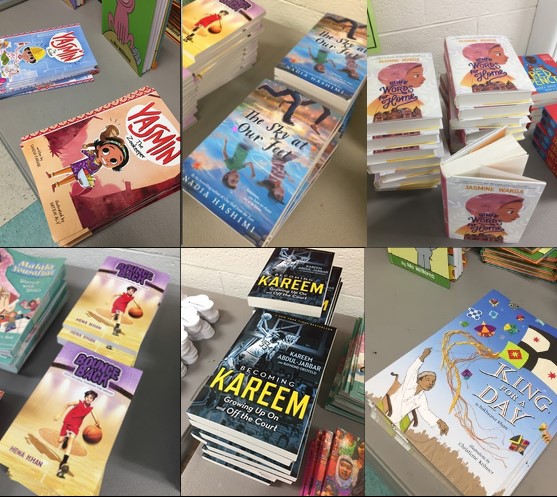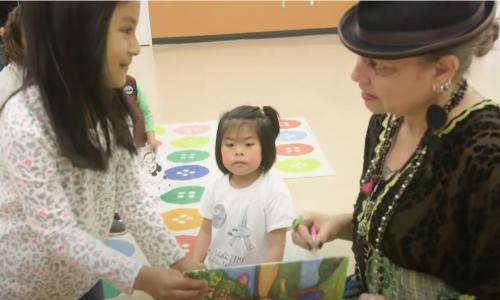Multilingual families are essential partners when it comes to supporting English language learners' (ELLs) literacy development. However, those partnerships may look different than what educators and schools are used to. Try some new ideas to see what works best with your families!
Building relationships with families
Get to know your families
Building relationships with families is one of the most important steps you can take in support of students. Getting to know families' languages, cultures, and interests can help build trust, strengthen school-family partnerships, and allow educators to make important connections as part of instruction and family engagement. The better you know your families, the more effective your family outreach will be! See more ideas in the following:
- Making Students and Families Feel Welcome
- How to Build Partnerships with Immigrant Families
- How to Use Technology to Engage Multilingual Families
- Communicating with ELL Families: 10 Strategies for Schools
Make sure families have information in their home languages
All families are legally entitled to information from their child's school in their home languages. In addition to sharing information about literacy instruction and students' progress, ensure families have information about any literacy activities, resources, or supports in their home languages. Also keep in mind that personal interaction and engagement make it easier for families to access and understand information from the school. Include any family liaisons or interpreters in your outreach to maximize chances of success.
Learn more about families' home languages
The more you know about families' home languages, the more you can tap into this valuable resource and the easier it will be to identify multilingual resources. You can start by learning which languages families speak. Keep in mind that some families may speak multiple languages. And in some cases, this question may not be as straightforward as it seems.
For example, many Indigenous families from Latin America speak Indigenous languages as their primary languages and Spanish as a second or third language. Indigenous families may also hesitate to share information about their Indigenous language, identity, or culture due to stigma and discrimination. Getting to know more about families' cultures and consistently welcoming them in the school community can help create a stronger partnership.
In addition, you can share ideas with staff on how to tap into students' home languages as part of students' literacy instruction, even if bilingual instruction is not currently offered in your school setting.
Encourage families to maintain their home languages
Many families have questions about whether they should speak and/or read in their home languages at home with their children. It's important for schools and families alike to understand that home languages are an important resource, both in terms of students' literacy instruction and students' connections with their family, community, and identity. Schools can share this message early and often by encouraging families to keep speaking their languages at home, answering families' questions about language, and providing resources in families' languages, such as bilingual books and the resources below.
Family Literacy Tips: Reading to Your Children in Your Home Language
Early literacy expert Bernadette Pilar Zermeño encourages families to share books together in their home language. This video is also available in Spanish.
Henry Sales, Mam Educator: Indigenous Families' Rights to Translated Information from Schools
Henry Sales, a Mam educator who was born in Guatemala, explains that all families, including those who speak Indigenous languages, have a right to information in their home languages from their child's school.
Reading SOS: I am still learning English myself. How can I help my child learn to read in English?
One of the most important things parents can do is provide lots of language and literacy experiences at home. Dr. Elsa Cárdenas-Hagan suggests that you share family stories with your child, use descriptive vocabulary in everyday conversations, and try to read aloud for at least 20 minutes each day to model fluent reading and comprehension skills. This video is also available in Spanish.
Rosita: Spanish Is My Superpower
When Rosita doesn’t want to play Veo Veo (I Spy), her friend Sophía asks why. Rosita shares it’s because she had a scary encounter at a grocery store where people told her to not speak Spanish and treated her unfairly. Rosita’s Mami explains that in situations like this where you feel unsafe, the best thing to do is walk away and find a grown-up to help you. Rosita realizes she is proud to speak Spanish, it’s like having a super power!
Literacy activities
Invite families to share songs, stories, and folk tales
Invite families to share the songs, stories, rhymes, games, and folk tales they know from their culture. This can be done in the classroom or as part of family outreach activities. If families are still learning English, invite interpreters or bilingual parent volunteers to help translate.
Being Bilingual Is a Superpower!: Tips to Support Language and Literacy at Home
Learn how you can help your child learn to read by celebrating your language, culture, and special time together at home. This video is also available in 7 other languages and an outreach guide offers activities that can accompany the video.
Lucía Gonzalez's favorite section in the library
Librarian and storyteller Lucía Gonzalez describes how family stories led to an important discovery in her career.
Make bilingual books available
 It's important to make sure students and families have books available in their languages, whether in classroom libraries, school libraries, or outreach events. You can use our booklists to find titles in different languages and also look for other options on multilingual books or translations. Ask bilingual colleagues, local community organizations, and local universities for help identifying books. If your school is a First Book school, you can also find out what books they have available in your top languages.
It's important to make sure students and families have books available in their languages, whether in classroom libraries, school libraries, or outreach events. You can use our booklists to find titles in different languages and also look for other options on multilingual books or translations. Ask bilingual colleagues, local community organizations, and local universities for help identifying books. If your school is a First Book school, you can also find out what books they have available in your top languages.
In addition, it's important to share books that reflect families' cultures and experiences. For example, the books pictured here were included as a part of a First Book event in Dearborn, MI, which is home to many Arabic-speaking families. The books featured stories about families from Pakistan, Afghanistan, and Syria. To find relevant titles, see our booklists.
Maya Christina Gonzalez: Seeing Ourselves in Books
Author and illustrator Maya Christina Gonzalez talks about why it is so important for all children to see themselves in books through diverse books and also shares her story "My Colors, My World/Mis colores, mi mundo" with young readers.
Do a book-making activity
Another way to increase the number of multilingual books in your school is through inviting students and families to creating their own bilingual books in their home languages and in English. This can be a wonderful activity or classroom unit that highlights family stories, folk tales, special traditions or recipes, and unique experiences. If it is possible to produce more than one copy of a book, you can leave a copy in the school for other families to read in the future!
Invite librarians to talk with families
Invite your school or public librarians to talk with families as part of back-to-school events, family outreach, or even school conferences. Families may not realize just how many free resources are available to their entire family and that they are eligible for public library cards, especially if they are new to the public library system.
Classroom connections
Ensure families know how their child is doing
Look for ways to provide families with regular updates about their child's reading progress. While conferences and report cards are important ways to share information, ongoing communication and conversations will likely be more fruitful. You may wish to let families know which skills and topics the students are working on, for example, and how families can support their children's literacy at home. Make sure that families know that they can ask questions at any time and how to contact their child's teacher with questions. As noted above, multilingual families may have lots of questions about reading or talking to their children in their home language; be sure to work with colleagues who are experts in ELL or bilingual literacy development to have accurate information available.
In addition, you may wish to share more in-depth information with families about how students learn to read in the Reading 101 Guide for Families, which is also available in Spanish.
Bring families into the process if students are struggling
It's important to communicate early and often with families when students are struggling. Ideally, if you have already established a positive relationship, that may make communication easier as well. For multilingual families, keep in mind that they need information in their home language; it's important to ensure they fully understand the situation you are trying to address; and they need to know that they are able and encouraged to ask questions at any point. For more resources and related videos, see:








Add new comment